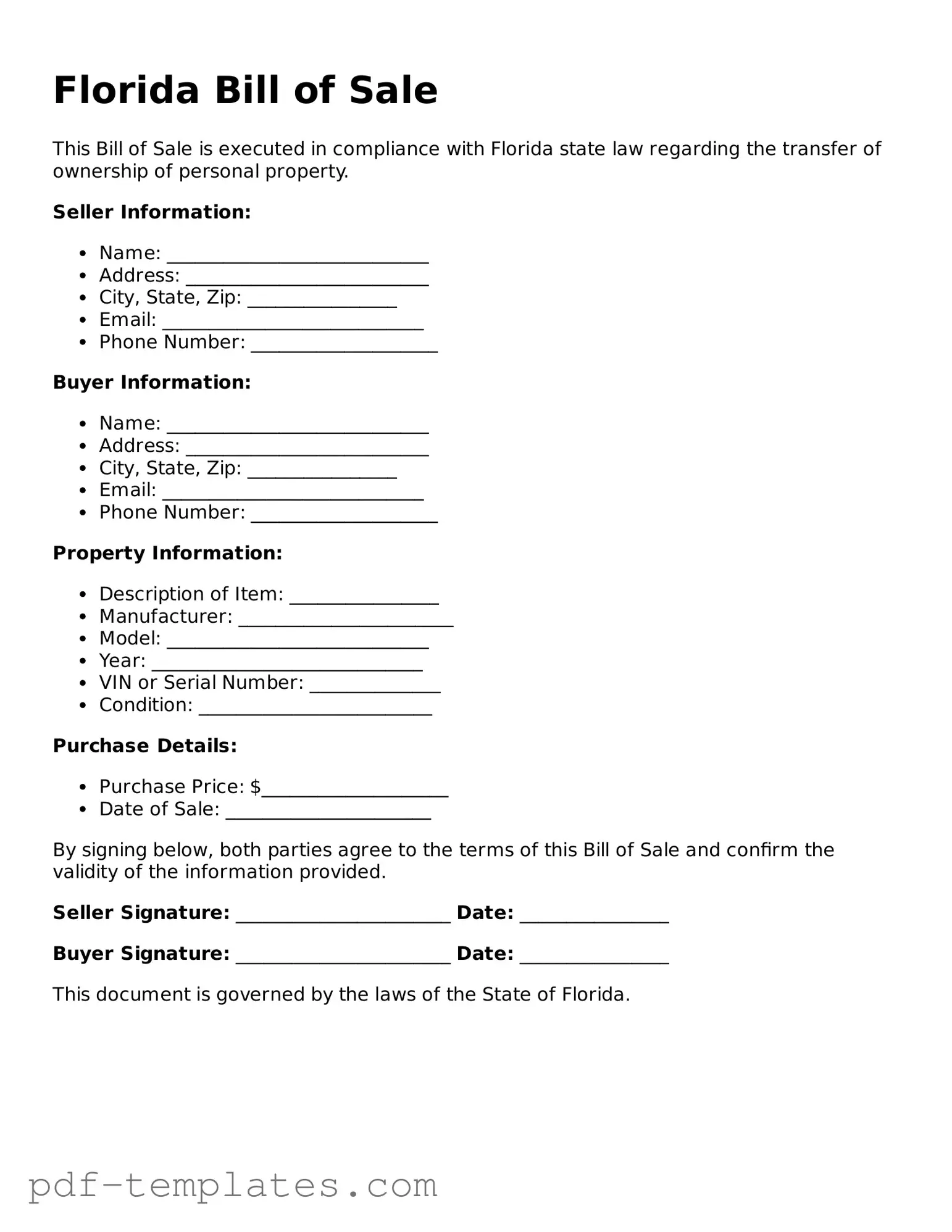The Florida Bill of Sale form is similar to a Vehicle Title Transfer form. This document is used when ownership of a vehicle is transferred from one person to another. Both forms serve to document the change of ownership and provide proof that the buyer has purchased the vehicle from the seller. The Vehicle Title Transfer form typically includes details such as the vehicle identification number (VIN), make, model, and year of the vehicle, along with the names and signatures of both parties involved in the transaction.
Another document akin to the Florida Bill of Sale is the Personal Property Bill of Sale. This form is used for the sale of personal items, such as furniture, electronics, or collectibles. Like the Florida Bill of Sale, it outlines the details of the transaction, including a description of the item, the sale price, and the names of the buyer and seller. Both documents serve as proof of purchase and help protect the interests of both parties in the event of disputes.
The Equipment Bill of Sale is also similar to the Florida Bill of Sale. This document is specifically used for the sale of equipment, such as machinery or tools. It contains information about the equipment being sold, including its condition and any warranties provided. Just like the Florida Bill of Sale, it ensures that both the buyer and seller have a clear record of the transaction, which can be crucial for future reference or legal purposes.
A Boat Bill of Sale is another document that shares similarities with the Florida Bill of Sale. This form is specifically tailored for the sale of boats and includes details such as the boat's registration number, hull identification number, and any accessories included in the sale. Both forms serve to establish ownership and protect the rights of both the buyer and seller, ensuring that the transaction is legally recognized.
The Firearm Bill of Sale is also comparable to the Florida Bill of Sale. This document is used when transferring ownership of firearms between individuals. It includes specific information about the firearm, such as its make, model, and serial number, as well as the names and addresses of both parties. Like the Florida Bill of Sale, it provides legal documentation of the sale, which is particularly important given the regulations surrounding firearm ownership.
A Lease Agreement can be seen as similar to the Florida Bill of Sale in that it involves the transfer of rights, albeit temporarily. This document outlines the terms under which a property or item is leased, including the duration of the lease and payment details. While a Bill of Sale transfers ownership, a Lease Agreement establishes a rental arrangement. Both documents require clear identification of the parties involved and the terms of the transaction.
The Warranty Deed is another document that bears resemblance to the Florida Bill of Sale, particularly in real estate transactions. This document transfers ownership of real property and guarantees that the seller has the right to sell the property. Like the Bill of Sale, it provides a record of the transaction and protects the interests of the buyer. Both documents are essential in establishing clear ownership and ensuring that all parties understand their rights and responsibilities.
Lastly, the Quitclaim Deed shares similarities with the Florida Bill of Sale, especially in the context of property transfers. This document allows one party to transfer their interest in a property to another party without any guarantees about the title. While it does not provide the same level of protection as a Warranty Deed, it still serves to document the transfer of ownership. Both documents are crucial for maintaining clear records of ownership and helping to avoid future disputes.
